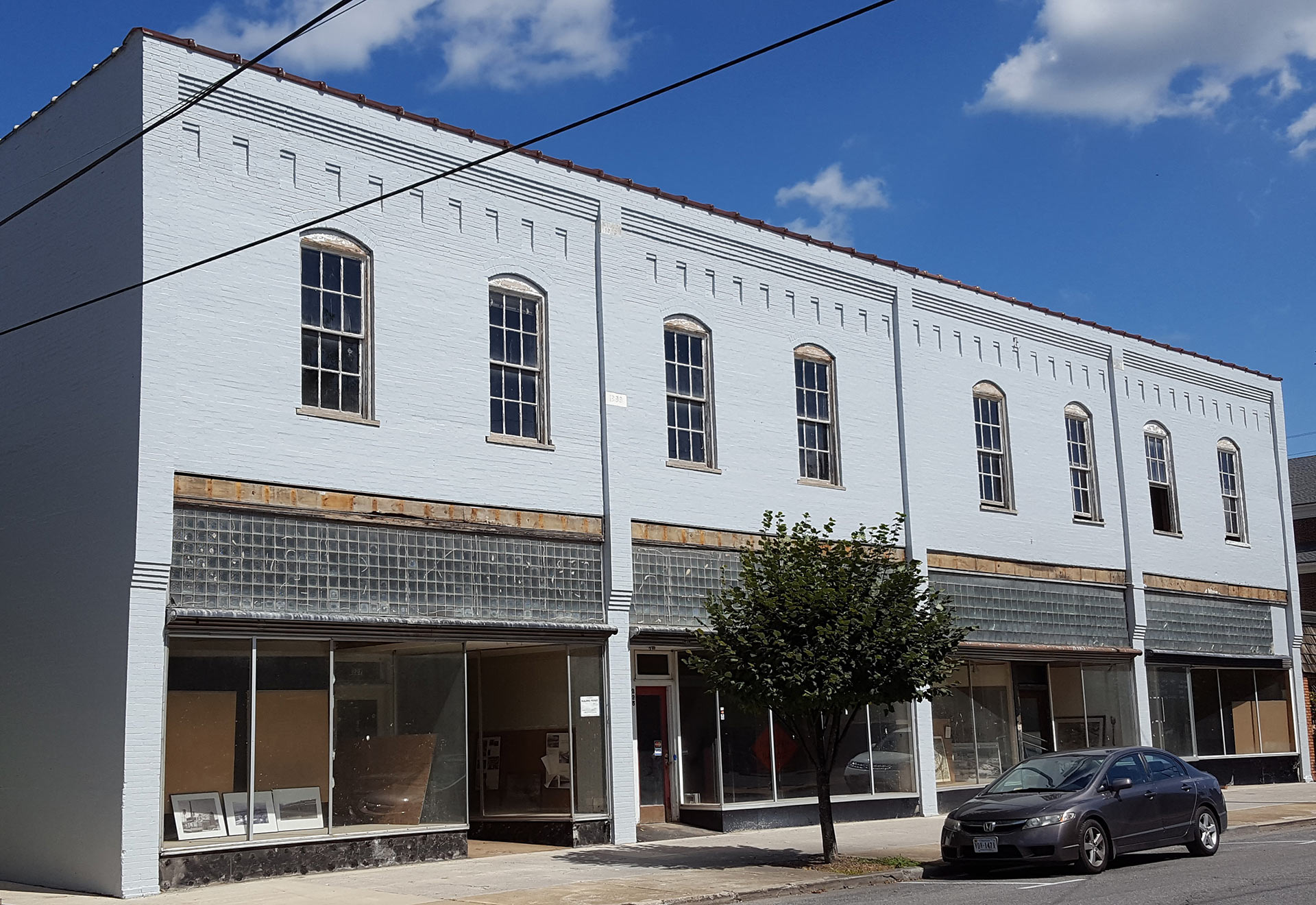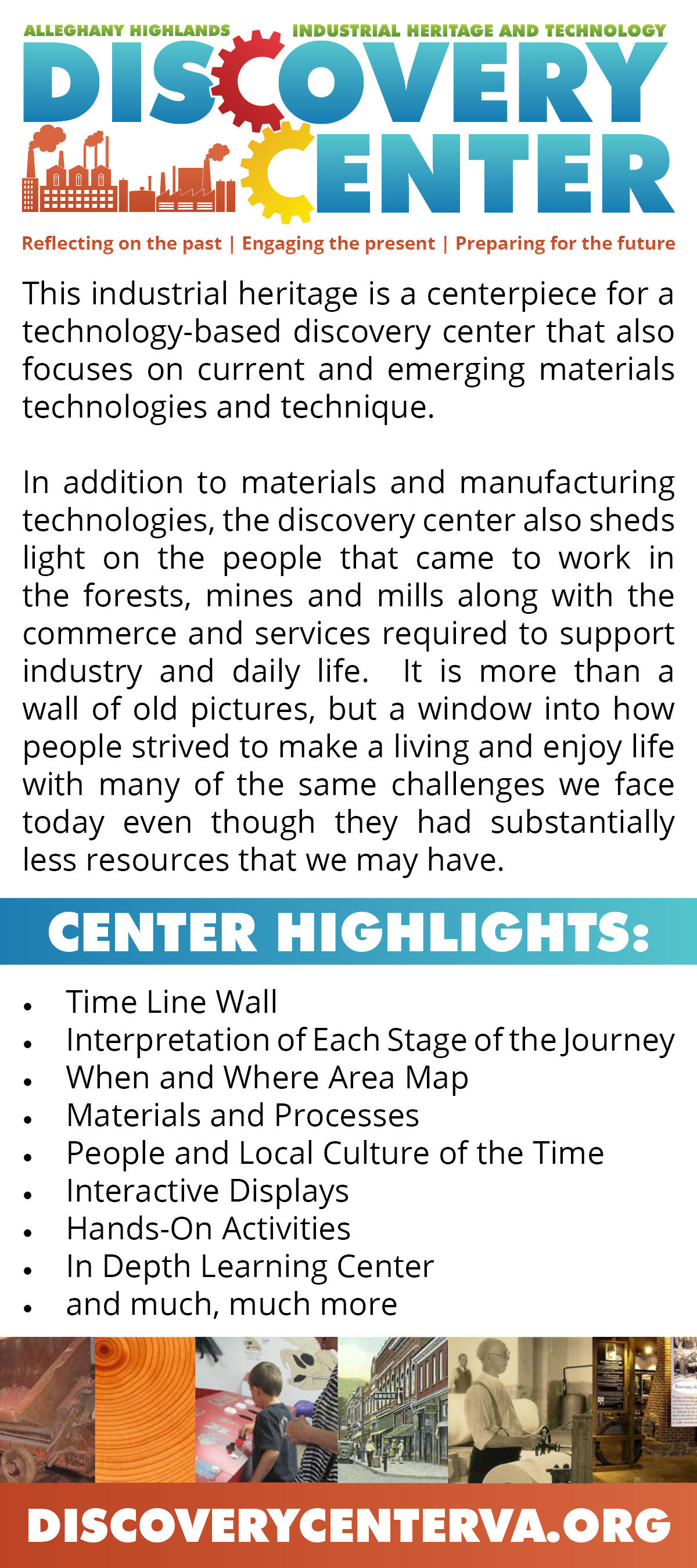What life Was Like
Farm Life
“By 1925, the radio was reported in Virginia as ‘becoming a necessity to the farmer’ in order to keep track of crop prices and markets and to hear ‘lecture by experts [that kept the farmer] informed of the latest methods of agriculture.’ At that time, 3,715 farms in the state had radios. Alleghany County had 54 farms per radio…”
“On 16 December 1935 the WPA educational radio project was established to use the talents of actors, singers, directors, and playwrights--in the ranks of those on relief.’ Shortly afterward, some Virginia Writers’ Project workers were given jobs writing quasi-historical and patriotic radio plays. Others were told to ask life history subjects, such as Josephine Wright of Potts Creek and Sarah Colleen Powell of Danville, in addition to what papers and books they read and movies they had seen, if they owned a radio. Both Wright and Powell did.”
Education in Alleghany County
“Some local education systems developing during the period withheld teachers for, or closed, rural one-room schools without being able to provide equal access to the newly class-based groups. One group of parents protested the closure of their rural Johnson Creek community by the Alleghany County School Board in 1939, complaining, ‘Our taxes are helping to build this fine building [the new white school in Covington], while our children can’t read nor write and have no school to go to.’ One of the women who challenged the board’s action was asked by the superintendent, ‘Why do you want to live up in such a place, anyhow? No electricity, no roads, no modern improvements.’ In response, she inquired why he had not stayed in Charlottesville from whence he had come: ‘It is a much better place than Covington!’”
Keeping the family together
“The decision either to keep a family together or to break it apart in the face of want or tragedy is a theme that runs throughout the VWP narratives. In one of the many such cases, and Alleghany County woman, compelled by her husband’s death from tuberculosis, had to find homes for four of her five children, including one said to have been ‘marked’ when she ‘doctored a sick calf’ before the child was born. The newborn baby’s blind eye looked like the calf’s eye and rolled about just as the calf’s eye did when it died.’ At the age of five, this little girl was given to an elderly couple who wanted a child to raise’ after their own children ‘were all gone.’ But the isolation and lack of educational opportunities or association with others her age further handicapped the girl with the ‘calf eye’ and left her an economic and social cripple later when the two older people died”
Alleghany County after the Civil War
“When interviewed in 1939, William West was ninety-eight years old. He had served as a drummer boy in the Civil War, and he spoke of conditions in Alleghany County when he returned at the war’s end.
We got twenty-five cents a bushel for corn for a long time. [But money was scarce and trade was common.] It was queen to hear the trading goin’ on. Ten pounds of bacon for a chicken. One pound of sugar for a quart of sees beans. After the second year, prices came up in a hurry. Wheat came back to reason first. That was our bread crop. The millers had the business then, for they took toll and group most of the wheat raised around here. Very little was sold away from the County till 1870. It seemed like the people were bread-hungry. Fresh meat was high. We did a lot of hunting. Deer were plentiful and opossums, quail, pheasants, and lots and lots of wild turkeys. It took a long time to get the hog-raising goin’ again. Everybody had eaten their hogs and there were no breeders left. Horses to work were something great. Only the rich could buy them!”
Fulton Pottery
“George N. Fulton, the ‘best potter in Alleghany County,’ was in fact born in Ohio. He noted the clay deposits in the area while serving with the Union army and returned after the war to establish a pottery kiln in the vicinity of Potts Creek...Leila Blanche Bess of Potts Creek, Alleghany County, who submitted the Fulton Pottery report and snapshot of the kiln site, was one of a number of workers on the Historic Inventory Project who were also employed later by the Virginia Writers’ Project. The HIP was sponsored by Virginia’s Conservation Commission from October 1935 to December 1938, with the purpose of surveying and documenting items and places of historic interest or significance in the state.
1. Subject: Fulton Pottery 2. Location: On Route #18, about 15 miles from Covington, Virginia, ¾ mile from Jordan Mines. Lane 300 yards. 3. Date: was in operation in 1875 4. Owner: W.D. Hepler, present owner 6. Historical Significance: George Fulton was said to be the best potter in Alleghany County and surrounding territories. He bought a small plot of land from Rev. John B. Davis, now owned by W.D. Hepler, near what is now known as Jordan Mines. He built a log dwelling house and houses for drying and keeping his stoneware. Nothing remains of the building but the kiln where the ware was fired still remains.”
Women in the Workforce
“Directly and indirectly, the women interviewed also voiced their personal opinions on the broader issues of social life, education, marriage, divorce, and work, in terms of and relative to conventional gender ideals and roles. Changing mores and attitudes not only produced different forms of behavior but also generated the potential for grievous conflict between generations. Thus the eldest daughter of an entrepreneurial family in Alleghany County thought her parents were ‘mossbacks’ because they [would] not allow her to go on weekend camp parties without a chaperone.’ In another example, spinners in rayon plants, female and male alike, had to pay close attention to their hands and nails because a hangnail could snag a reel of fine thread and result in a several week layoff from work. Although seeming innocuous, such cosmetic constraints could significantly alter family social relations and behavior. So despite one mother’s protest that ‘ironing don’t make hangnails,’ her daughter--the spinner--used the conditions of her work to avoid general household chores, to justify costly manicures, and, less directly, to argue her need for leisurely activities and long car trips on weekends. And a number of speakers remarked further on the connections between cars, major changes in courtship practices, and the ‘speed age.’”
Silk mill/millwork--Margaret Wolfe--direct interview
“Margaret’s father, Frank Wolfe, was stricken with a degenerative arthritic condition, which required the use of crutches even in July 1940 and which soon after restricted him to a wheelchair...Despite the possibility of occasional outside help from them, the major responsibility for farming or of otherwise providing for the family fell upon those who remained at home and were able to do so: in 1940 that was Rose Wolfe and her three youngest girls (who were ‘made boys of’), including Margaret. Each of the three older Wolfe sisters before Margaret had, in turn, ‘worked on the farm before they got work in the mills.’ In comparing work on the farm with mill work, however, Margaret Wolfe acknowledged the impact and needs of a cash economy. Farm work--whether done by male or by female--did not keep ‘a check coming in regularly every two weeks’ or keep a family ‘from worrying about taxes and things that only money can take care of.’ But working in a textile mill, she concluded, wasn’t what it was ‘cracked up to be’ either...Nonetheless, in 1941, Margaret Wolfe chose marriage and a life of farming over the world of business and mill work.
“When I got out of school I wanted to get a job, and my sister tried to get me on at the Rayon Plant where she has been working ever since she finished school several years ago...Well I thought she could help me, but she couldn’t. The manager told her he would like to take me on, but said he was not hiring any girls and didn’t know just when he would. Clara said the very next day he sent in several for her to instruct...I made up my mind I’d make a pull for myself. They all told me it was wasting my time to try to get a job unless some one helped me out. I went to town and to the old silk mill and put in my application. They asked me about my education, how much high school I had had, and talked to me a little while. I went back home and was called to work in two days… “I don’t know what I’ll do, whether I’ll keep on at the mill or not. I would like to get something better if I could. I hardly think I’ll get to go to school any more as someone has to help out here, and Dorothy has not finished school yet. Until she gets work or something else opens up, it looks like I would have to stand by the folks at home…”
Farming/Rayon--John Ernest Bess Sr. interview
“In 1860, John Ernest Bess’s grandfather Hamilton Bess and his family lived next to Daniel F. Arritt and his parents in the Boiling Spring District of Alleghany County. John Ernests’s father, twenty-three-year-old John L. Bess, was a teacher in a ‘commercial’ school at the time and was just beginning to accumulate some property. But within two years, he and several of his Arritt neighbors were driven by the Civil War to enlist in a Confederate army unit…
“Yes, I’m a mail carrier from Covington to Paint Bank, a distance of nearly seventy miles a day. I go up Potts Creek to Paint Bank, returning by way of Mill Branch, Wrighttown, travel over the same road that I do as I go to Paint Bank… “What did I do before I took this job? Well, I am a farmer and like it better than any other work. But I had not been farming for ten years and had no job. I had done a lot of little things to help along with our living, but farming is what I like best of all. I live in the new part of Covington, called South Covington, near the Rayon Plant. I moved there with my family when the plant was being built. I hoped to get work there but never did, and later we took boarders, and then the post office…
“We had always had plenty, not that we were rich at all, but we had never known want until after we were burnt out. Nowadays when people get burnt out people pitch in and help them to get on their feet again, but it was not so at the time. Father had a good deal of money out, he did a credit business, you know. And when he needed money so badly, only one man came forward and paid up his bill. That was why the business went to the bad, so many people owed big store accounts and did not pay…”
Population and Jobs
“In 1920, Alleghany County (including the independent city of Clifton Forge) had a total population of 11,787 urban and 9,709 rural inhabitants. By 1930, the 13,377 residents of Covington and Clifton Forge made up the county’s urban population and its rural population of 13,650 persons consisted of 3,329 farms and 10,321 nonfarm residents. Fewer than 10 percent of the county’s white workers and not quite 2 percent of its black workers were gainfully employed in agriculture. Females constituted slightly more than ⅕ of the county’s white labor force and almost ⅓ of its black labor force. Within those numbers, 76 percent of the black women were in domestic or personal service; only 19 percent of the white women were so employed. Rural white youth (aged fifteen to twenty-four in the census categories) accounted for 22 percent of the population, and black youth added another 2 percent to that age group. The distribution of occupations in the county census for 1930 indicates the impact of commerce: of iron mines and furnaces, the railroad, silk mill, rayon plant, and the Westvaco pulp and paper mill with its associated chemical by-product plants. These workplaces employed more than half the labor force in Alleghany County, and these industries were not depression-proof. Rather, they were highly sensitive to the vagaries of the market economy, as witnessed by Joseph Hippert’s 1938 account of the closing of the Low Moor iron furnaces and mines. Other factories managed to keep operating through the depression, but their workers often suffered the loss of wages or pensions by way of layoffs and reduced working hours or were subjected to hazardous working conditions about which they dared not complain for fear of losing the scarce jobs they had. The 1930 census indicates the extent to which the inhabitants of Alleghany County were then dependent on industrial employment…”
G.G Brinkley interview--safety in industry
“One thing about the industries here now and twenty-five years ago, there is no comparison of conditions: the improvements are more efficient ways of making their product and the safety guard of the employee. Fatal accidents are rare now, there have been only about five men killed in five years at the Westvaco mill in Covington…
“There is a safety committee. And when accidents occur they chase it down and eliminate the cause, so no one else will be caught in the same trap. A safety campaign is on between every department in our mill, and between this mill and all other owned by the same company. In their six plants and within each plant! The Covington plant stands first for having the least accidents. The record is kept by counting ‘man hours.’ “George L. Miller, pres. Of Covington plant is a mighty good man to deal with. I have found him willing to listen to his employees. We have been getting along fine. Of course, we have our ups and downs like all mills. As time rolls around, the employers will see the benefit of the Wagner Act as well as the employee. People get to working together better, when each knows what to expect.”



